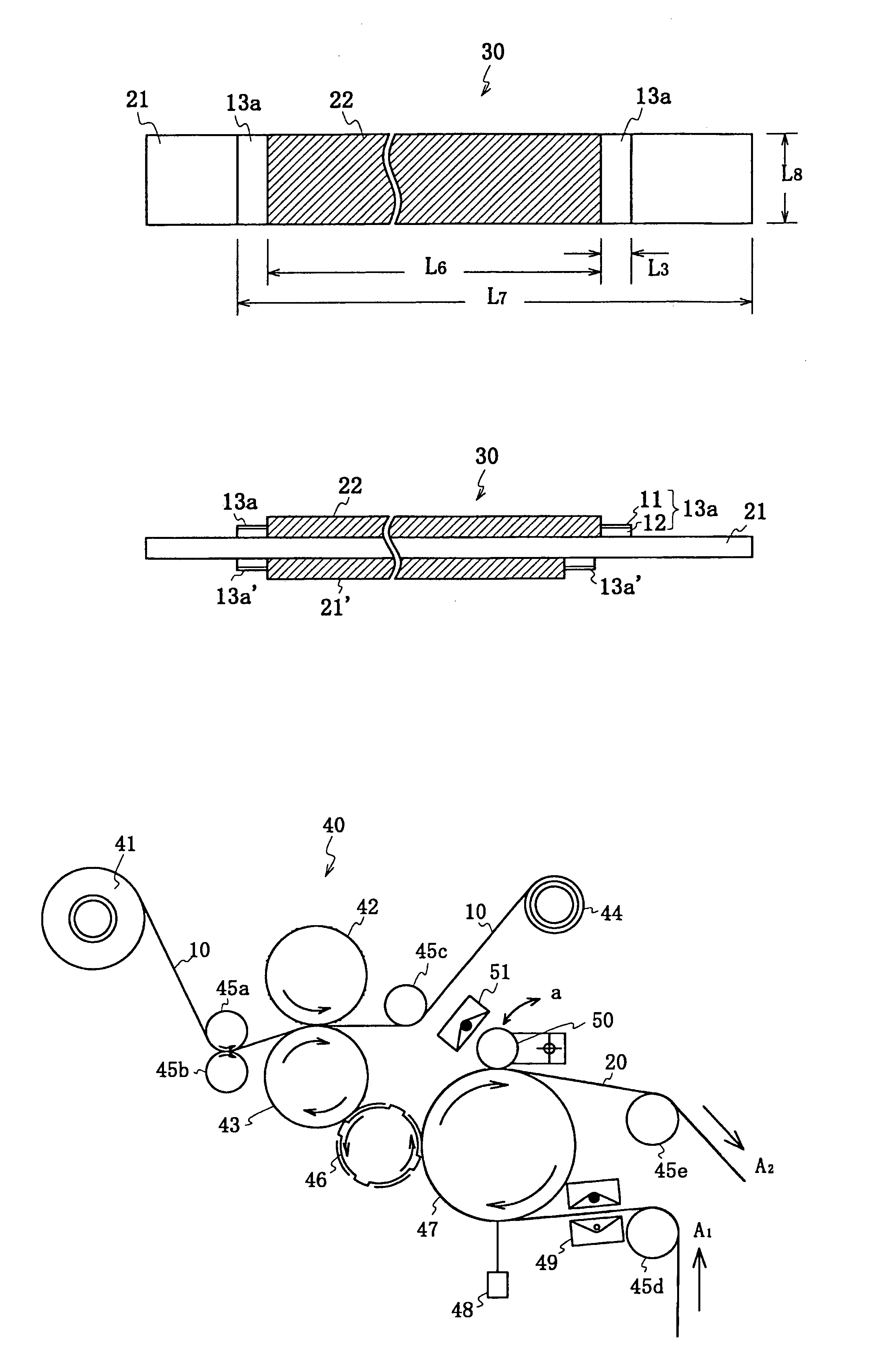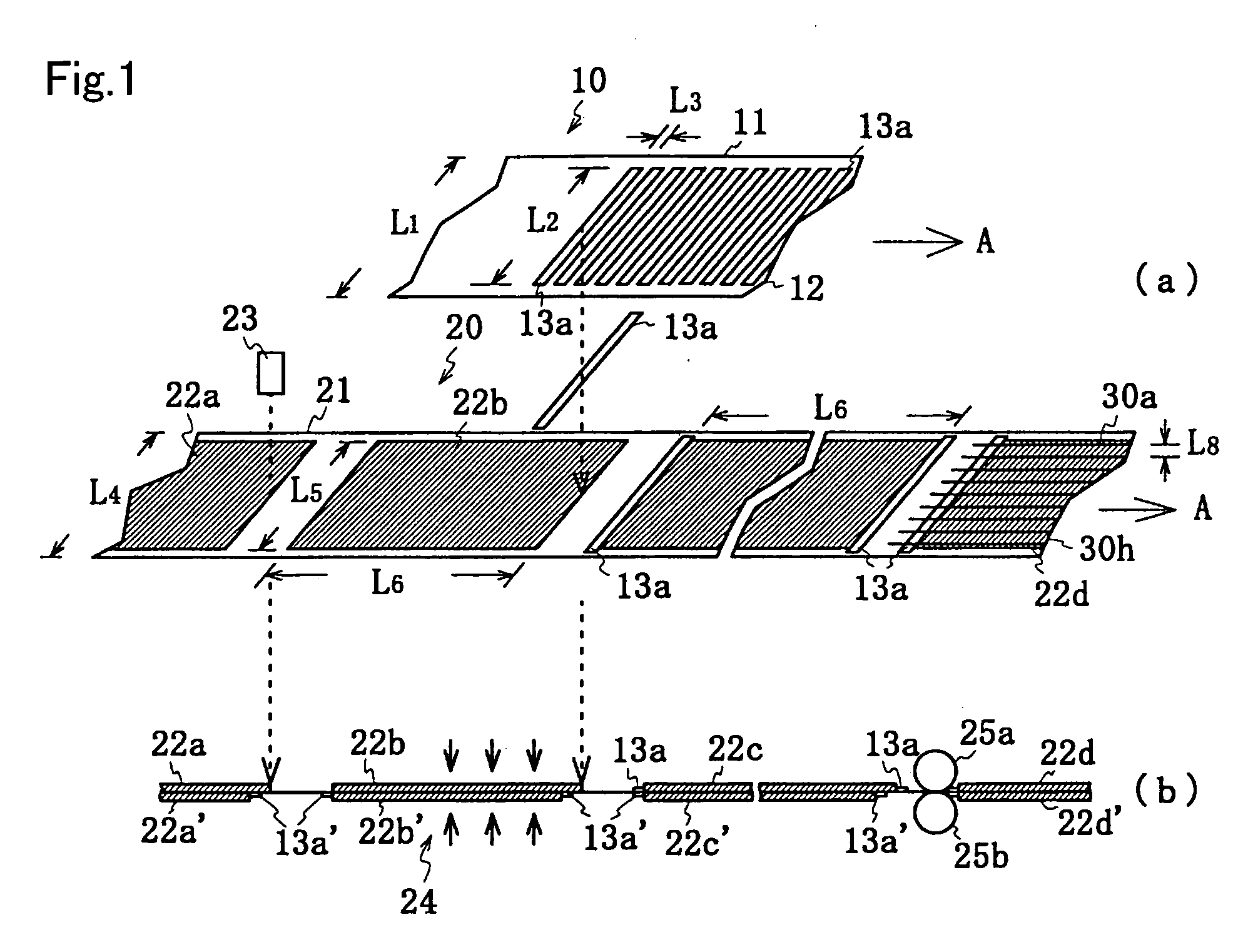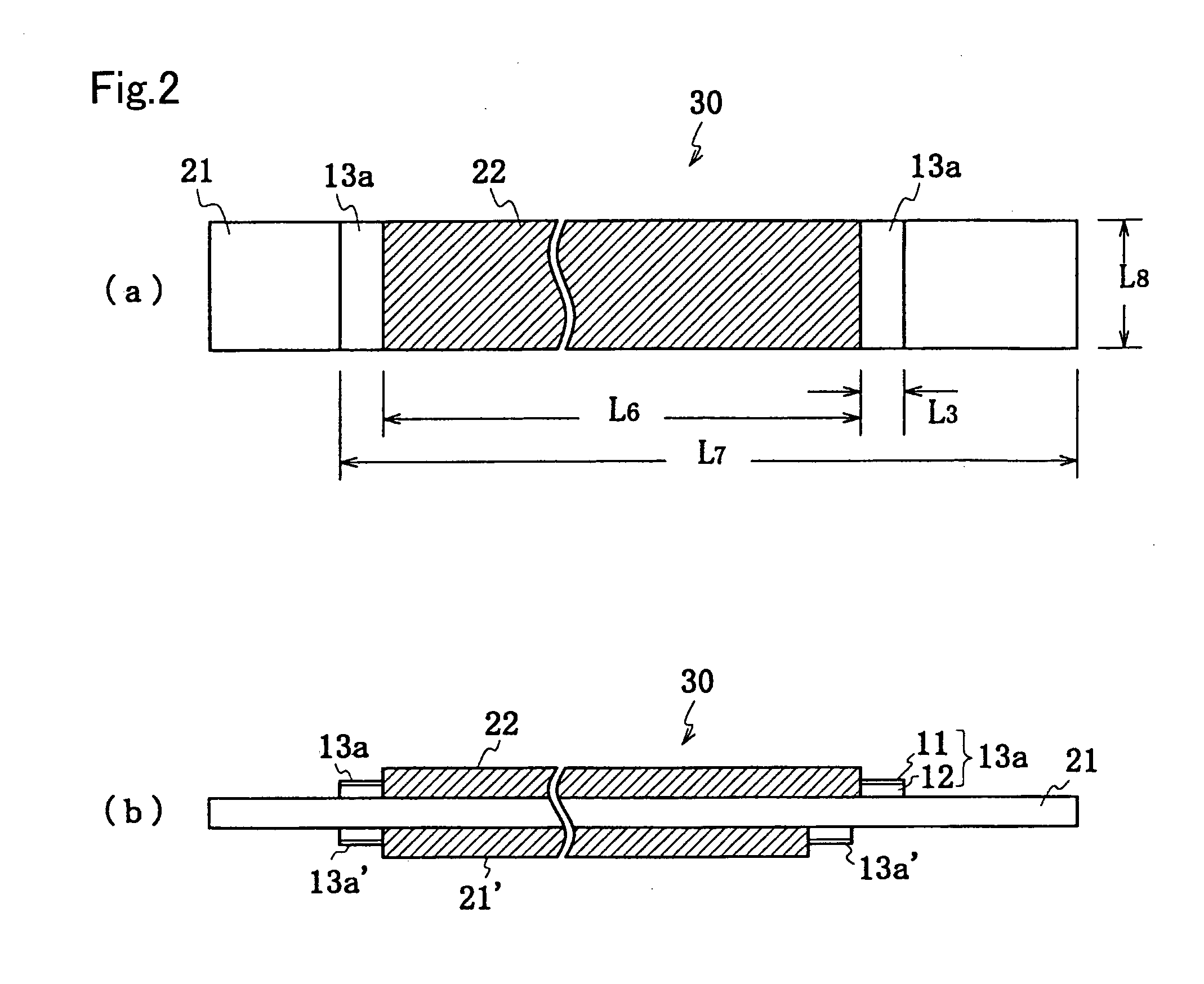Electrode plate for secondary battery, method of manufacturing the same, and secondary battery using the same
- Summary
- Abstract
- Description
- Claims
- Application Information
AI Technical Summary
Benefits of technology
Problems solved by technology
Method used
Image
Examples
Embodiment Construction
[0039]The electrode plate according to the invention and the method of manufacturing the same is hereafter described with reference to the accompanying drawings. FIG. 1 is a schematic diagram explaining the method of sticking an insulating sheet. FIG. 1(a) is a detailed diagram showing the relationship between the insulating sheet and an electrode sheet as well as the insulating sheet, and FIG. 1(b) is a side view of the electrode sheet. FIG. 2 shows one piece of the electrode plate manufactured by the manufacturing method of FIG. 1. FIG. 2(a) is a detailed plane view thereof, and FIG. 2(b) is a side view thereof.
[0040]An insulating sheet 10 as well as an electrode sheet 20 both having a predetermined shape are prepared in advance. The insulating sheet 10 includes a sheet material 11 having a predetermined width and thickness, and a paste layer 12 attached on the back surface of the sheet material 11. The sheet material 11 is formed by using a sheet of paper or resin material includ...
PUM
| Property | Measurement | Unit |
|---|---|---|
| Time | aaaaa | aaaaa |
| Temperature | aaaaa | aaaaa |
| Length | aaaaa | aaaaa |
Abstract
Description
Claims
Application Information
 Login to View More
Login to View More - R&D
- Intellectual Property
- Life Sciences
- Materials
- Tech Scout
- Unparalleled Data Quality
- Higher Quality Content
- 60% Fewer Hallucinations
Browse by: Latest US Patents, China's latest patents, Technical Efficacy Thesaurus, Application Domain, Technology Topic, Popular Technical Reports.
© 2025 PatSnap. All rights reserved.Legal|Privacy policy|Modern Slavery Act Transparency Statement|Sitemap|About US| Contact US: help@patsnap.com



